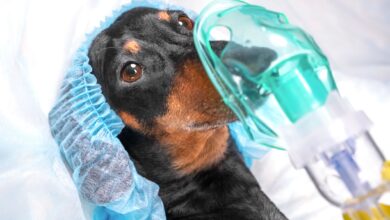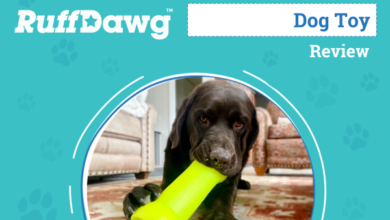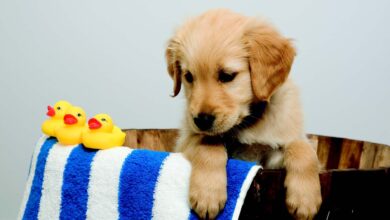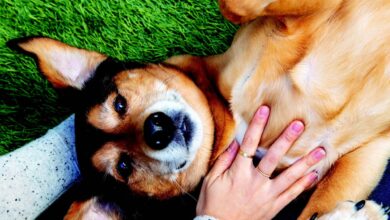Help Fido Play Well With Others

[ad_1]
Can’t we all just get along? Well, when it comes to the best ways to help our dogs get along with other dogs, we need to set them up for success, manage the environment and actively monitor their interactions. And, the main key to helping dogs get along is knowing each individual dog: their likes and dislikes, how their day is going, if they’re tired, if they’re hungry, if they’re thirsty. Meeting their individual needs makes meeting new dogs easier on them and everyone.
Set up for success
Setting up dogs for success encompasses everything that happens before they interact with one another. This means:
- Picking a neutral location for introductions.
Examples are a park in a quiet section neither dog goes to regularly, a neighbor’s yard with no pets of his own, an open field and a wide meridian of a quiet neighborhood street with very wide pathways. Or, if at home, removing all items of personal interest to a dog. Items like toys or food could possibly cause an issue with resource guarding, which would get in the way of the dogs getting to know each other. Ensure the dogs are mentally, emotionally and physically ready to learn from this new experience in the best possible way.
Manage environment
Managing the environment means supervising, guiding and handling the interactions of the dogs as they are occurring. Adjust to the needs of each individual, and proactively scan how those interactions are occurring (like a lifeguard at a beach scans the water to ensure the safety of those in and around it).
Management also includes keeping interactions fair and brief, even as relationships develop and time together increases. Slowly and incrementally increase the amount of time together from one minute to 10 minutes of play. This is a great way of managing the amount of time dogs experience progressively together and then stopping, instead of letting them play a little bit longer and suddenly having a bad interaction occur. Management means being proactive, instead of needing to be reactive.
Helpful tips to being proactive are:
- Keeping introductions short while on leash
- Providing space with parallel walking
- Having a good short-range rapid recall like “check in” for when they are off leash
- For some dogs, this could mean wearing a muzzle, if that’s what they require to ensure additional safety measures are already in place before they are needed.
Socialize with parallel walking
Parallel walking means going on a walk together on a wide trail, an open field or on opposite sides of a quiet road while walking parallel to each other. This is a great way of helping dogs experience time together without direct social contact. Sometimes parallel walks are improved for the individuals if they are both staggered and parallel, with one dog out in front for a bit and then trading places with the other dog walking out in front, still on opposite sides of a wide path or quiet road. This provides each of the dogs a different vantage point of their environment shared within a manageable proximity to another dog, experiencing the walk together.
Help them share
A sharing game I play with my dogs is saying each of their names right before giving each one in turn a small food reward/treat. I prepare a small amount/bowl of treats and say:
“Summer’s turn” (Hand Summer a treat)
“Bear’s turn” (Hand Bear a treat)
I repeat the sequence until each dog is handed an equal amount of treats in succession. This game is for dogs that are already starting to get along but are not over-aroused by being given food rewards as treats. Use something tasty and easy to give to them in small pieces so it can be quickly consumed by each dog. This can be done with dogs on either side of you or with dogs on either side of a doggie gate if needed. Remember, we can always set up the environment to ensure greater success. The dogs can be standing, sitting or lying down. Repeat this process of freely providing resources to each dog for as many rewards you have in your hand. For two dogs, six is a good number to split up between each dog with three turns for each.
I find this sharing game easier to manage with food, but it can also be played with affection by petting each dog after saying his name. I don’t do this with toys, though. Fair play with an individual, then shared moments with a toy can get complicated, as it involves removal of the toy to be shared. Pick your moments. Don’t do this game when the dogs are very excited, hungry or with dogs who have resource-guarding issues.
[ad_2]
Source link






